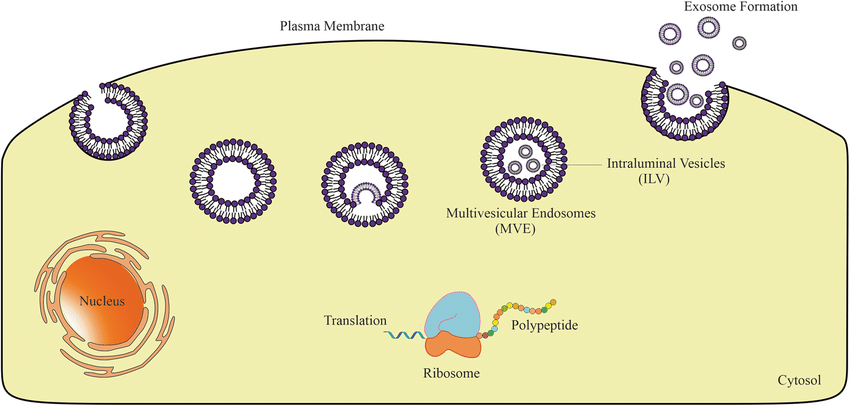Figure - uploaded by Reza Jafari
Exosome biogenesis: Exosomes are formed by producing MVB and ILV structures following endocytosis and inward budding of the MVB membrane
Over the past decade, therapeutic messenger RNAs (mRNAs) have emerged as a highly promising new class of drugs for protein replacement therapies. Due to the recent developments, the incorporation of modified nucleotides in synthetic mRNAs can lead to maximizing protein expression and reducing adverse immunogenicity. Despite these stunning improveme.

cells. Intraluminal vesicles (ILV) are formed by introversion of endosomal origin and endosomes, which are packed with these ILVs are entitled multivesicular endosomes (MVE) [47,48]. The origination from the multivesicular body (MVB) and release into the extracellular matrix upon the fusion of MVB with the plasma membrane was depicted in Fig.
There are several types of nVVs, commonly used in GDEPT, such as: polyplexesshort-lived electrostatic complexes that require an excess of polymer [69]; dendriplexes [70], lipoplexes [71], lipopolyplexes [72], lypodendriplexes [73], and micelles -dynamic amphiphilic polymers [74]. Nano-systems include: mesoporous nanoparticles [75,76], exosomes / microvesicles [77], organic / inorganic hybrids [78,79], nanofibres for from natural polymers [80,81], elecrospun nanofibers [82], niosomes / nioplexes [83], etc.
inhibiting T regS and inducing differentiation of M1-type MQs Prolonged survival of tumor-bearing mice [149] Polymeric hydrogels (mPEG-b-PELG-based hydrogels/SC) CDDP IL-15 Melanoma Inducing cell cycle arrest, synergistic anti-cancer efficacy, and reduced systemic toxicity compared to monotherapy Enhanced anti-tumor immunity owing to suppression of T regS and activation of NK cells and CTLs [150] Lung cancer Enhancement of M1 (MQs) switched the immunesuppressive TME to the immunostimulatory one Facilitation of cell apoptosis and release of tumorassociated antigens Activation of endosomal TLR-9 in infiltrated APCs Enhancement of secretion of PICs such as IL-6 and TNF-α [160] immunosuppressive TME and ameliorate the in vivo PK behaviors [121,122]. Accordingly, several types of NPs with different physicochemical properties, including lipid NPs like liposomes, polymeric NPs, metallic or inorganic NPs like mesoporous silica nanoparticles (MSN), hydrogels, cell-derived nanovesicles like exosomes, and hybrid NPs are currently being developed as delivery systems in CIT [123][124][125][126]. Cationic lipids and polymers and hybrid NPs have been widely used as the common choice's carriers over the recent decade [127][128][129].
